
"My computer shuts down when it gets hot” is a comment we have seen from several users so far this year. We will be talking about the possible causes and solutions to this problem. If you are a user of Windows, you've probably randomly shut down your PC. This can be frustrating and have a negative impact on your productivity as it interrupts important tasks and activities.
This random shutdown It may be due to software problems or hardware, or both in some cases. We have investigated the ways you can stop your Windows 10 PC from randomly shutting down, so you can work without fear of being interrupted while doing important things on your computer.
Maybe you may be interested: Right Mouse Button Not Working. Causes and Solutions
“My PC turns off when it gets hot.” Solutions
Some users are saying the following: “My computer shuts down when it gets hot”. Let’s first talk about the solutions when it comes to desktop computer. Later we will discuss the topic of portableIf you own a laptop, you can go to the following sections in this article.
Solution 1: Check that the computer is not overheating
These days, computers are programmed to shut down after they warm up to a certain temperature. This is a safety measure because damage can occur to both hardware and software if the machine gets too hot.
Si Your Windows 10 PC shuts down abruptly, the first thing we would recommend you do is check if it is overheating a lot. Overheating can be caused by damaged or underperforming fans, poor ventilation, dust, and inadequate power supply.
What we would recommend you do is clean your computer, make sure the room you are working in is well ventilated, use a stable power supply, and elevate your laptop if some parts of the fan are on the bottom.
Solution 2: Disable fast startup
Windows 10 is optimized for fast recovery from sleep, shutdown, and hibernation. This feature can hamper performance and cause random shutdowns if not disabled. The following procedure shows you how to do this. how to disable the quick start in Windows 10:
- Step 1: start the Control panel pressing the button WIN on your keyboard, by typing «control Panel» (without quotes) and pressing ENTER to open the first search result.
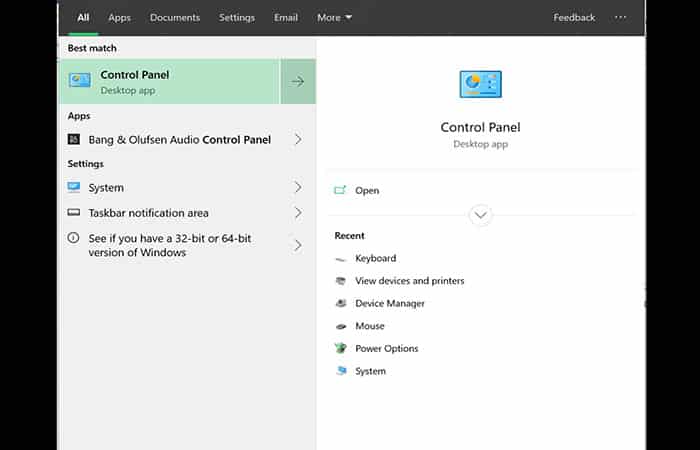
- Step 2: changes the display mode of the Control panel to large icons.
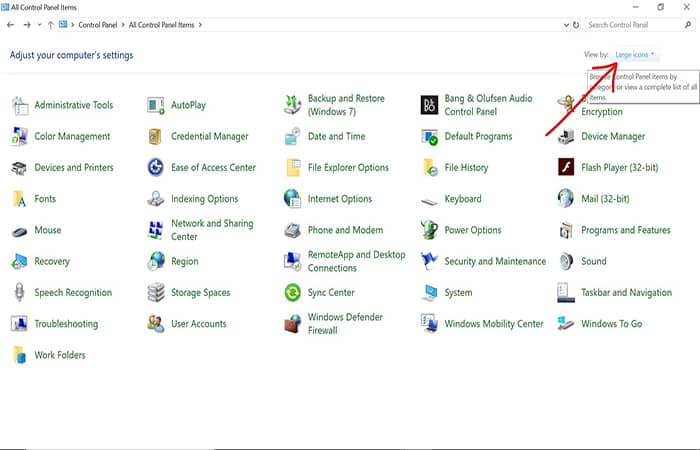
- Step 3: Choose "Energy options«.
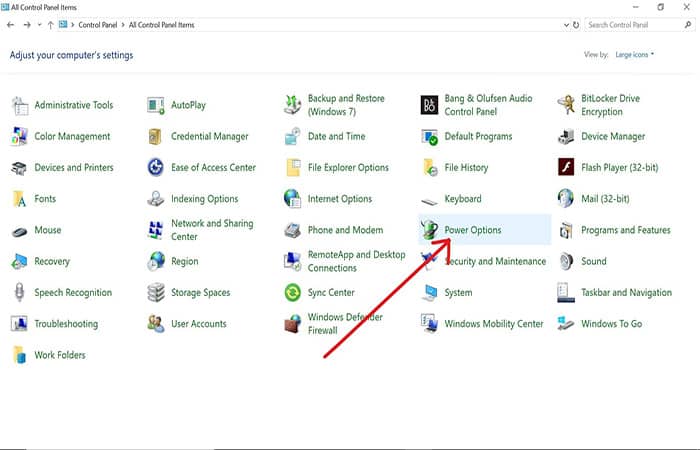
- Step 4: Click on the link «Choose what the power buttons do«.
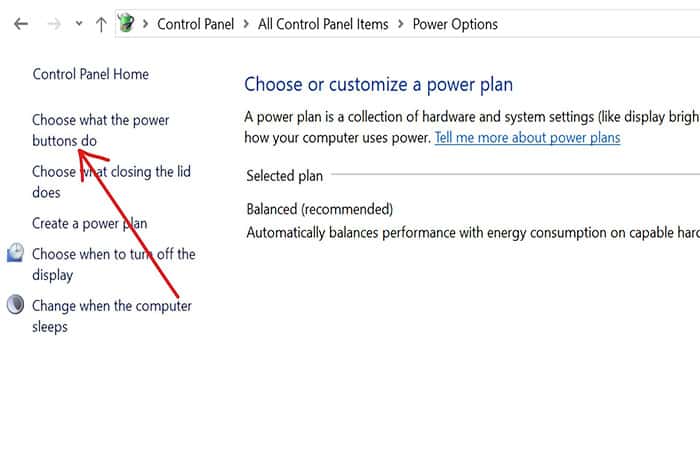
- Step 5: open the link «Change settings that are currently unavailable«.
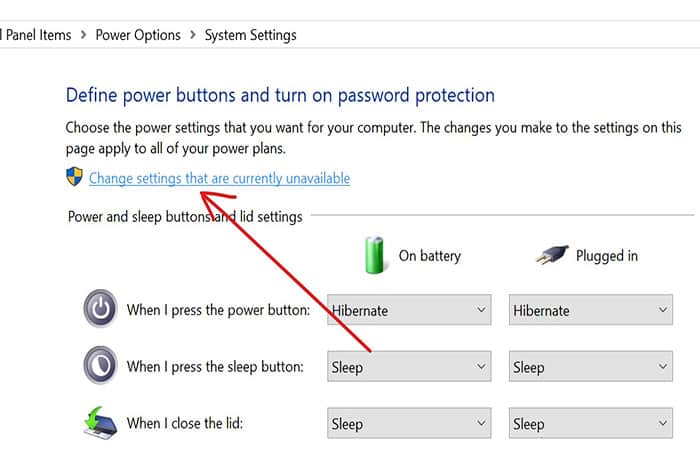
- Step 6: uncheck «Enable fast startup (recommended)» and click Save Changes.
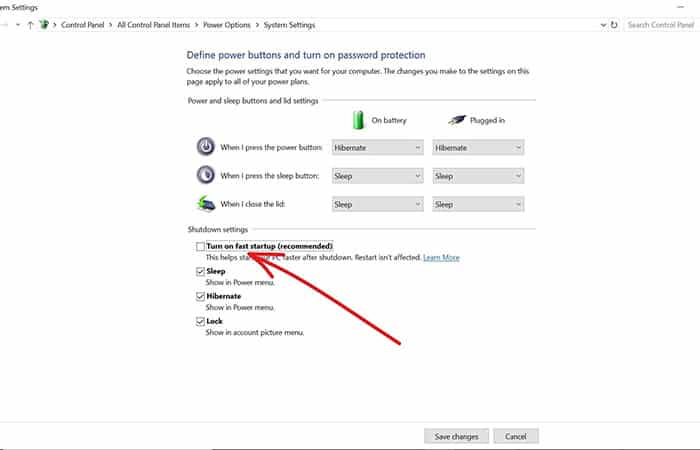
Solution 3: Update outdated drivers and GPU driver
Outdated drivers could be the culprit when your PC randomly shuts down. To update any driver, open the Device administrator right clicking on Home and selecting «Device administrator«. Expand the devices one by one, right click on each one and select «Update Driver«.
If you can't cope with the hassle of updating drivers one by one, check online for services that allow you to search for outdated drivers on your PC and update them automatically. As far as the driver of the PC is concerned, Graphics Processing Unit, you may not get the necessary update by updating it as you update other drivers.
Instead of doing that, you should check the manufacturer's website and download the updates from there. The best way to update a GPU driver is explained below:
- Step 1: right click on Home and select Device administrator.
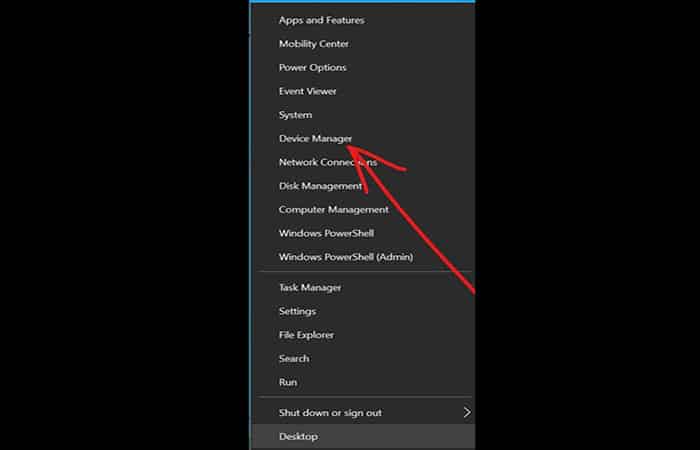
- Step 2: expand display adapters.
- Step 3: Right click on your display adapter and select Properties.
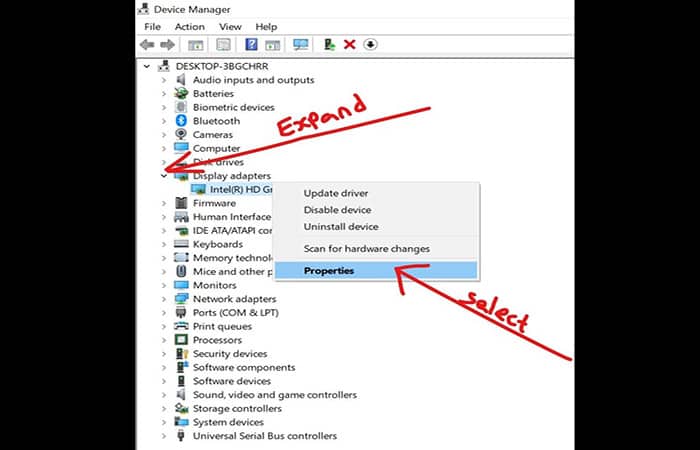
- Step 4: switch to tab Details and click on the drop-down menu «Device description«. Then choose hardware.

- Step 6: Open your browser, paste the ID and search for it. The first search results will show the exact name and manufacturer of your GPU.
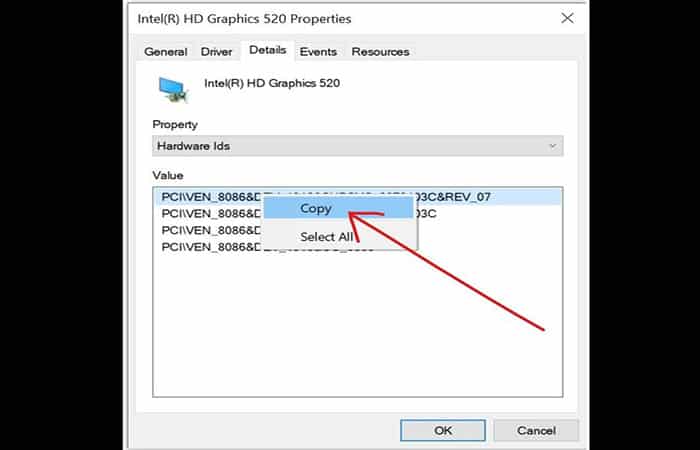
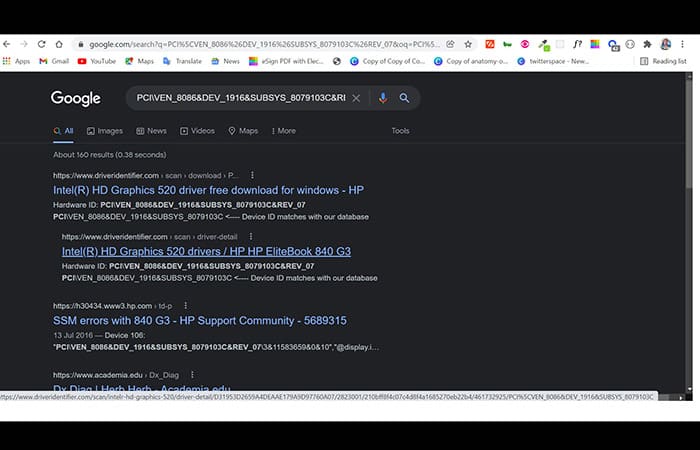
- Step 7: Navigate to the GPU manufacturer's website and download an updated driver.
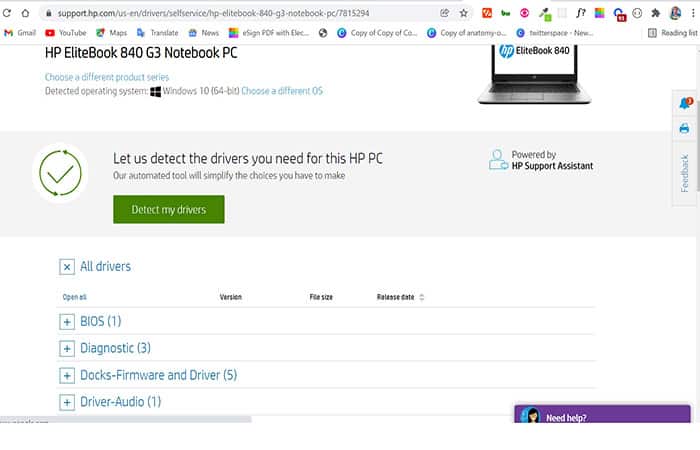
- Step 8: install the driver and restart your PC.
PD: If you can't find the manufacturer's official website, copy the name displayed for your GPU and prefix it with "driver update for«. In our case it would be “driver update for Intel(R) HD Graphics 520 drivers / HP HP EliteBook 840 G3".
Solution 4: Scan your computer for viruses
The reason why you are among those who say “My computer shuts down when it gets hot” may be viruses. Some malware and viruses cause your computer to shut down abruptly.
What you should do in this case is run a full system scan with Windows Security (also known as Windows Defender) or any third-party antivirus program of your choice. The steps below explain how you can perform a full system scan with Windows security:
- Step 1: Press the WIN key on your keyboard and search for “windows security«. The first search result should be Windows security. Press ENTER to open it.
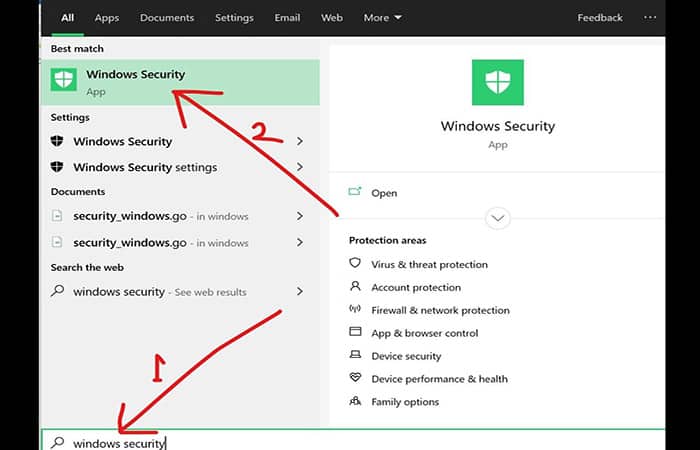
- Step 2: switch to tab Protection against viruses and threats on the left.
- Step 3: Click on the link «Scan options«.
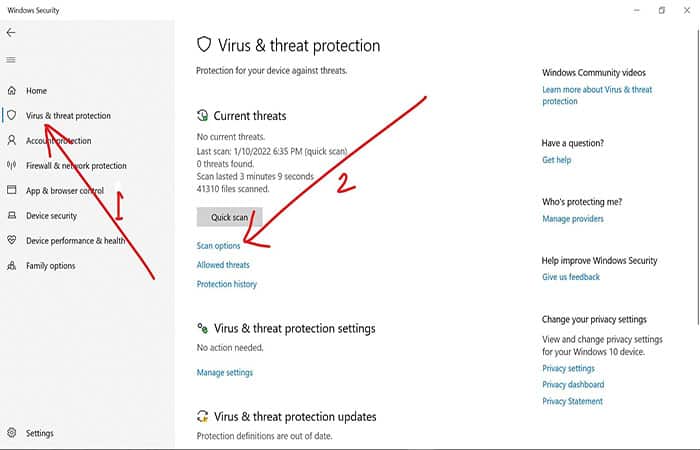
- Step 4: choose Full scan and click Scan now.
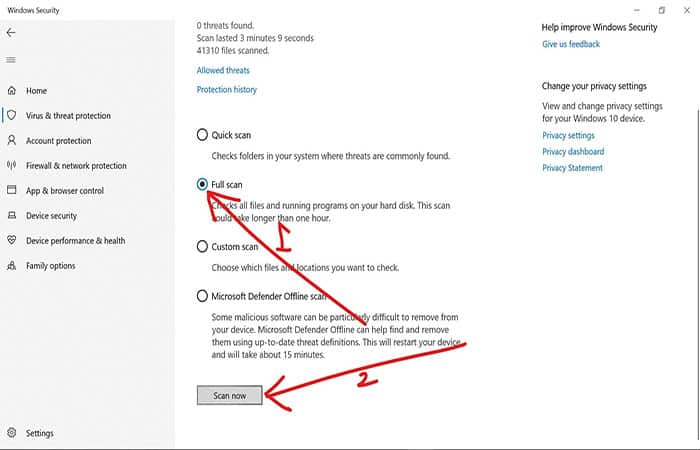
PD: This could take many hours, so please be very patient.
You may want to know: The 9 Best Backup Programs
How to stop laptop from overheating and shutting down?
Sometimes you may be working on your laptop when it suddenly shuts down. Upon restarting, your laptop indicated that it was a thermal shutdown and upon searching for it in Google, you discovered that it was due to overheating. While this behavior can be a little distracting, it is simply the computer's way of preventing further damage to the device.
If the device is not turned off immediately, the consequences can range from a melted processor to a burnt laptop. If you are looking for a solution for the constant thermal blackouts, you are in the right place. In a moment we will examine the causes and provide you with possible solutions to thermal shutdowns on your computer.
Why does my laptop overheat and shut down? (causes)
The main reason why your laptop overheats and shuts down is excessive dirt buildup in the fan area. Broken fan and other hardware issues are also possible causes that cause your laptop to overheat and shut down. Below is a detailed explanation of the reason and ideas on possible solutions.
1. Excessive accumulation of dirt
Excessive dirt buildup may be the reason why Your laptop is overheatingMost laptop fans are designed to control overheating by taking in cool air and removing warm air. During air intake, the fan also sucks in dust, dirt, crumbs, and other tiny debris.
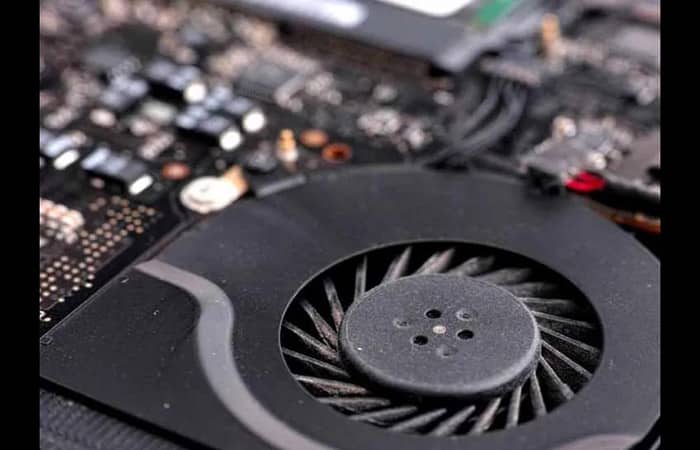
2. Broken fan
Are you now saying “My computer shuts down when it gets hot? A broken fan can cause your laptop to overheat. Most laptops have fans as their primary cooling agent. They work in such a way that you will be able to hear them in a quiet room.
If you can't hear the fan, it's probably broken or has stopped working for some reason. When this happens, Your laptop is overheatingIf you are using laptops that allow you to turn the fan on or off manually, you may have turned off the fan unconsciously.
Note that some laptops do not have fans at all. They regulate temperature by circulating heat through the body of the laptop or by throttling the CPU clock speeds.
3. Other hardware problems
Specific hardware issues can also cause overheating. Several other hardware components work together to make your laptop run smoothly, and a failure in any of them will certainly cause overheating or many other problems.
For instance, A faulty battery will most likely swell and expand., which will cause more heat to escape than usual. Keeping a faulty battery in your device will likely cause overheating and pose a fire risk in extreme cases.
A thermal paste between the CPU and the laptop's heat sink is responsible for dissipating heat from the CPU. When this paste dries, it fails to conduct heat, which can lead to overheating.
How to stop laptop from overheating and shutting down? (solutions)
After you’ve tried these solutions, you’ll never say “My computer shuts down when it gets hot” again. There are many ways you could try to resolve overheating, from simple DIY tasks like general troubleshooting to technical repairs like fan cleaning.
Hopefully, careful observation of these tips will minimize overheating on your laptop. Below are some of the best ways to prevent your laptop from overheating and shutting down during use.
1. Check drivers and BIOS for updates
It is essential to ensure that your device drivers and BIOS are up to date. There are support wizards on most laptops that come with Windows that you can use to check the BIOS and driver status. Your BIOS is up to date for an optimal experience when using your PC and to prevent overheating.
2. General troubleshooting
Some general troubleshooting tips will help you get your laptop back to normal. Since high temperatures cause overheating, expose your laptop to colder environments should help.
Consider using a laptop stand or placing it on some books to dissipate the temperature. In short, try to avoid contact with the ground. You can also enable power saving options so that your computer uses less energy and generates less heat, reducing the risks of overheating.
3. Clean your laptop's vents and fans
Cleaning the fans and vents on your laptop is One of the effective ways to end overheating, or at least greatly minimize it. You can use a compressed air sprayer to remove dust particles from your laptop's vents. You can also use a mini vacuum cleaner.
Use your laptop's manual to find the air vents if you don't know the location. If your laptop's fan is visible through the vents, you can use a pressurized air spray to clean it.
However, you must be careful, so as not to end up causing more damage. You will have to disassemble it on most laptops before cleaning the fan. If you are not confident about doing this, you can take it to a technician to clean it for you.
4. Restart the computer
Restarting your computer is an effective way to fix overheating. It frees up memory by closing running applications and software, and also clears the laptop's RAM. You perform tasks faster and better by restarting.
5. Test hardware failure
If overheating is due to hardware damage, it may not be detected unless you use diagnostic software to confirm it. Depending on the operating system running on your laptop, there are numerous diagnostic software you can use to test for hardware failures.
6. Install Microsoft Windows updates
If you are using a Windows computer, you can try installing all Windows updates if you are having an overheating problem. Newer versions of Windows use fewer resources and generate less heat overall.
7. Run a hardware diagnostic test
Since hardware problems are one of the possible causes of overheating in laptops, running a hardware diagnostic test will help you identify problems with your computer's hardware.
It will also help with troubleshooting procedures that may resolve the issue. Running a hardware diagnostic test is one of the best ways to determine whether your laptop's overheating is hardware-related or not.
8. Close background apps when not in use to reduce heat
Background apps can be very resource intensive, as long as they are available. If you don't have a beefy laptop, you shouldn't leave too many apps running in the background, or you'll have to deal with the heat.
9. Perform a Windows System Restore
If the overheating problem started recently, you can restore your computer to a previous restore point where it worked without any problems. You can use the restore point tool on your computer to find restore points.
10. Change settings in power options
Many power management settings can help your computer use fewer resources and therefore generate less heat. You can start by enabling the battery saver option to see how far that takes you.
11. Restore your computer to factory defaults
You can restore the default operating system on your laptop. In other words, this is simply performing a factory reset. A factory reset returns the laptop to the condition factory settings. Before you restore your computer to factory defaults, you need to back up all the files you care about.
12. Change power settings to turn off when not in use
Suppose you like to leave your laptop screen ON even when not in use, your computer will generate a lot of unnecessary heat. Consider TO TURN OFF your screen whenever you are not actively using your computer. This simple practice can reduce the temperature of your device.
13. Check heat sinks
The heatsink is located on top of the CPU. It is responsible for reducing heat in your laptop by increasing its working surface area and spreading liquid across its surface area. Problems with your heatsink can cause overheating issues. Grease and clean the heatsink and CPU to get it working again.
Is it hot in the environment?
Laptops They are designed to operate in a normal temperature rangeIf you sweat a lot in your attic in the summer, chances are your laptop will overheat there too. Enough direct sunlight will overheat your laptop, especially if the laptop's color and keyboard are black.
If you leave your laptop in your car and the car feels like an oven when you open the door, it's too hot to turn on the laptop. All Laptops rely on the surrounding air to cool them downThe warmer the air, the less cooling the laptop will receive by circulating air through the computer.
Is your battery overheating?
Batteries can get hot for several reasons, including internal fault before bursting into flames. That doesn't happen very often anymore, thanks to massive recalls a few years ago, but if you can't touch the battery without feeling burned, you should turn it off, remove the battery, and run it off the AC adapter.
The battery may get hotter than usual simply because the entire laptop gets hot and heat is transmitted, even through the plastic. You should check the web for recalls if you think the battery is too hot, and if it's not listed, continue with the battery troubleshooting flowchart.
Has the fan been running?
If the fan never runs on your laptop, it's a problem. Most laptop fans run more than users would like, especially the loud ones, but Lack of ventilation usually means a dead fan.to and an overheated laptop.
The higher quality the laptop, the more likely it is to use a high quality fan and run it at the lowest RPM possible to reduce noise.
But if your laptop is overheating and you never hear the fan and you can't detect any airflow from the vents, then either the fan is dead or there is something wrong with the controller. If you don't replace the fan or get it running again, you will shorten the lifespan of your laptop.
Did you flash the BIOS for some reason?
We recommend everyone to update their laptop BIOS unless it is absolutely necessary to fix an operational issue. If you update the BIOS and the fan stops working or the laptop starts to overheat, you can blame the manufacturer for providing a bad update and you can blame yourself for installing it.
The first step is to check their website and see if the original BIOS is still available. Unfortunately, the technical support departments of many laptop manufacturers and warranty service subcontractors will direct you to update the BIOS if you don't have the latest version as part of their elimination process when you call with any problems.
Have the thermal and power management settings been changed?
It is always worth checking both the CMOS settings and the Windows power management settings. to see if there are lower power settings or coolers available. Some laptops gave users the option to run silently, which usually means reducing the fan speed, leading to faster heating.
The power management profile for playing DVD movies may try to limit fan noise at the expense of heat, and the CMOS settings may include some fan controls that Windows doesn't override. There are many user options for customizing performance and power usage, and if you didn't have overheating problems before changing them, you may want to return to the default settings.
If a fan has failed or is making noise, it's a fairly easy replacement job on most laptops, though you'll want to check first if more than one fan is used so you can get the right one. We recently convinced someone to replace her noisy fan herself (well, her mom helped her) after showing her how she could buy a new one on Amazon for a few bucks.
Shipping costs more than the fan. If you can't tell if a fan is running, try holding a thin piece of paper near the laptop's vents and see if it goes into the vent or flies off, either of which would indicate the fan is running.
Are you using your laptop on a soft surface?
Laptops They are designed to work on hard, flat surfaces. Some of these have air vents on the bottom, with nothing more than a few small rubber nubs to keep the laptop off the surface. On a bed or lap, the ventilation will be blocked.
Most laptops place the vents on the sides or back, but it's easy enough to block them if you're using your laptop in bed, with loose clothing, or on a very cluttered table. If the vents are blocked, the laptop fan will run overtime and the laptop will still get hot.
If your laptop keeps shutting down, keep in mind that could be shutting down to protect itself from thermal damage. You need to look at the environment you are operating in.
Did the laptop shut down automatically?
Most laptops are designed to shut themselves down if the CPU overheats, and other overheating conditions can also trigger an automatic shutdown. You don't want to turn your laptop back on again if it's hot and constantly shutting down. It's best to figure out why it's overheating and not push it to the limit.
Some overheated laptops may have a timeout period before you can turn them back on, others may start to boot and then lock up or shut down again. There are no rules, it depends on the engineering of the particular laptop. Automatic shutdown on thermal runaway will usually be a BIOS routine, which may have a checkpoint setting in the CMOS setup.
Is the fan on all the time or does it have hot spots?
Some laptop models were poorly designed, so there is a particular spot on the keyboard or where you rest your wrists while typing “My computer shuts off when it gets hot and I only use it for a little over five minutes.” It’s worth doing a little research online to see if this is a known issue for your model.
If there are tons of mentions online of people who have the same access point but their laptops have not failed, It may just be a nuisanceAnother annoyance is a fan that runs all the time There, or it spins up and down every time you open a new program, among other things.
Too much fan noise is better than no fan at all, so we tend not to worry about it unless it's a problem.
Has your laptop been freezing or losing data?
Data loss can be caused by all kinds of software issues, including malware, so we can't go into depth here. But data loss from files that don't close properly when your laptop freezes isn't out of the ordinary, and you can expect hard drive errors if it's getting very hot. If your laptop won't heat up and you're experiencing data loss and crashes, check out the motherboard, CPU, and RAM flowchart.
Does your computer shut down without overheating?
The truth is that many laptops get hot under certain conditions; due to poor design, insufficient memory, or slow CPUs. So you can't assume that any problem you have with a laptop overheating (aside from temperature and fan noise) is due to overheating.
If the laptop shows the same problems the next day within a few minutes of powering on, before it warms up, the problems are probably not due to overheating. Try checking the other flowcharts for performance issues.
However, if the problems don't return until the laptop is in use long enough to warm up again, it's time to do a thorough cleaning and make sure you're using the laptop in a temperature-friendly environment.
How to clean an overheated laptop?
Start by unplugging the AC adapter, removing the battery, and then carefully inspecting all surfaces of the laptop for vents. If there are vents on the bottom, it's a sure sign that operating the laptop on any soft surface, including your lap, can lead to overheating.
If you were not aware of the vent locations and you realize that your laptop's airflow has become obstructed, try operating it on a table and see if your overheating problem goes away. Look inside the vents with a flashlight shiny and see if there are any layers of dust or dirt (which can be sucked into the air intake) built up on the heat sinks.
What to use to clean
You may be able Clean some of the dust and dirt with swabs from the outside or with a safe electronics vacuum. It's generally safer to use canned air that's specifically for cleaning electronics, but you should wait until the laptop is opened so the dust has somewhere to go.
If you only blow compressed air At the vents, you can clean the immediate path and cool it down a bit, but there's a chance you've blown an insulating layer of lint onto some electronic components, and it's best not to let that happen.
How can I help myself?
Do a search on YouTube from a video of someone cleaning your laptop model. If you can't find any, look up keyboard or motherboard replacement, which will show you how to access the inside without removing every last screw. Once you have the body open (no need to disassemble the lid section with the LCD), study the air paths used to remove heat from the CPU and video processor.
Don't go crazy with compressed air directly into a fan. It is possible to damage a fan if you spin it too fast, and keep in mind that A DC powered fan is simply a windmill running in reverse., that is, it takes energy rather than generating it. You don't want your fans acting like windmills.
What happens with overheating?
If overheating is critical, to the point that the CPU thermally shuts down, it is time to remove the active heatsink, make sure the fan works when turned on, that it has not deformed away from the CPU, and update the temperature.
The active heat sinks are always designed for extraction, while the passive heat sinks, finned metal caps without fans, are often glued to components as there is no failure mechanism other than aging of the glue.
Some laptops may use an active heatsink on the video processor and CPU, and many models use copper thermal pads to draw heat away from the processors, with the fan located remotely.
What you should not do
Don't use some random gunk instead of thermal paste. Order a tube online or visit your local electronics store. You should also be careful about cleaning off old gunk. We generally think denatured alcohol is safe.
Some places sell special cleaners. What you don't want to use is a household solvent which can leave an oily residue that ends up acting as an insulator, which is really the last thing you want.
When all is said and done, cleaning won't always solve an overheating problem. Some chips get hotter and hotter as they age, and continued overheating further increases internal resistance in a death spiral.
Is the AC adapter plugged in?
Disconnect the ac adapter from the wall outlet or turn off the power strip it's plugged into, after which you can worry about removing it from the laptop. Unless it's smoking and the rubber is melting, it's probably okay to pry it off with your thumbs, but we've burned ourselves a few times on melted wires and it's not recommended.
If it's just the smell of smoke without any continuous waves or flames, it's probably a blown component and the excitement is over. Many people are trained to grab a fire extinguisher and call 911 at the first sign of smoke. We're not going to argue against it, but it's a bit of an exaggeration.
Finding the source of the smoke after the fact can be a real troubleshooting job unless the cause is obvious. Before opening the laptop, make sure it has cooled down, is unplugged, and the battery is not connected.
The Two tools to locate burned components These are the eyes and nose, although even with a motherboard removed from the laptop, it's difficult to pinpoint the fault by smell because the initial puff of smoke is trapped in a small spot.
You may wish use a magnifying glass to inspect Carefully inspect all components on the motherboard, looking for discoloration or melting of components or the circuit board itself. If you discover a single component with a burnt spot, it's worth trying to replace it if it can be correctly identified.
FAQs
We have provided an extensive number of causes and solutions for users who have reported “My computer shuts down when it gets hot.” Now we will answer some frequently asked questions related to the topic:
How can I clean my laptop fan without opening it?
You can clean your laptop fan with an air sprayer Pressurized air. Feel free to use a spray of pressurized air through the vents without opening your laptop. However, some laptops do not allow you to do this and you will have to open them up to clean the fans.
Why does my laptop overheat so quickly?
Esto It is mainly due to dirt or debris in the laptop fan. When debris gets into the fan area, it could clog the fan's ability to regulate temperature, leading to overheating. Extreme use of a laptop can also cause it to overheat.
Can a laptop catch fire?
A laptop may catch fire when overheatedWhen the laptop is exposed to very high external temperatures along with internal overheating, the lithium-ion cells in the battery reach a high temperature. When this happens, flaming gases are released, which could cause a fire hazard.
How can I stop my laptop from shutting down automatically?
You can cancel the auto shutdown on your laptop using Run, Symbol of the system o Windows PowerShellAuto power off is a feature that allows your laptop to shut down under conditions of extreme CPU usage, system idle, low battery or overheating.
How to stop laptop from overheating and shutting down without unplugging it?
This can be done by cleaning the vent and fan with a pressurized air sprayer. Limiting your laptop's exposure to high temperature environments and running hardware tests to determine potential hardware failures will also go a long way in reduce overheating on your laptop.
Should I put my laptop in the refrigerator?
Don't put it in a refrigerator. Condensation will kill it eventually. If you really can't refresh the machine, use an air conditioner. Put the laptop near the vent and it will do what you need.
Is it normal for the laptop to get hot?
Despite your first instinct, a warm laptop isn't necessarily indicative of major problems. A normal computer will get warm during use, and most laptops can function well in temperatures up to 95 degrees.
How can I cool down my laptop?
Do not block your computer's vents. Use a cooling pad for laptop. Avoid using programs that exceed the limits of your computer's CPU. Clean your computer's fans and vents. Change your laptop's settings to improve its performance. Turn off your computer.
Can I use a hair dryer to clean my laptop?
DO NOT Don't bring the hair dryer casing or anything like that close to the laptop. You'll build up static electricity and ruin your laptop. This is similar to when people clean the inside of a desk with a vacuum cleaner.
Can I vacuum my laptop?
Large vacuum cleaners are not recommended.- They are fairly ineffective at removing dust from laptops and can also cause a buildup of static electricity which you don't want around a laptop. Insert the nozzle of the air cleaner into the vents (or as close as you can get) and start blowing away the dust.
How do you know if your laptop is broken?
Check the «blue screen of death» on your monitor. Try moving the cursor on the screen. Determine if a program suddenly stops working or closes. See if there is enough memory. Look for a pop-up message from «imminent hard drive failure» at startup.
Take a look at: How to Check Temperature on Mac – Solution and Alternatives
Final thoughts
You may never say “My computer shuts down when it gets hot” again, but if not, you’ll still know how to fix it. Having your laptop shut down due to overheating can be quite infuriating. Don’t worry if you have an overheating laptop; there are more than enough solutions to mitigate this problem and prevent future occurrences.
Even then, consider trying the low-risk solutions before attempting the high-risk ones, and this will save you a lot of money if the inexpensive solutions work. Also, observing preventive measures will be your best bet because, as they say, prevention is better than cure. If the ways recommended in this article do not help you, you should seek professional services.
My name is Javier Chirinos and I am passionate about technology. Ever since I can remember, I have been interested in computers and video games, and that passion has turned into a job.
I have been publishing about technology and gadgets on the Internet for over 15 years, especially in mundobytes.com
I am also an expert in online marketing and communication and have knowledge in WordPress development.